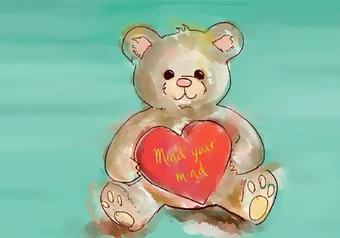Content warning: Mentions of self-harm.
Today, my aim is to introduce a mental health app called Calm Harm and share my thoughts. It was created in the United Kingdom and it’s a free app to download, available on Google Play and the App Store. Its main tagline is “Worried about self-harm? Download Calm Harm.”
Deliberate self-harm, or non-suicidal self-injury, typically refers to a variety of behaviours that are non-adaptive and harmful. According to the Cornell Research Program on Self-Injury and Recovery, both men and women engage in these behaviours, and some American studies have found that 12 to 20 per cent of young adults have self-injured. It is more common than you think. Self-injury is sometimes used as a way to cope with intense emotions. Some individuals have a hard time expressing their feelings, so they resort to self-harm.
I heard about the app through my work and decided to test it out. On its website, there is a brief description:
“About Calm Harm: The urge to self-harm is like a wave. It feels the most powerful when you start wanting to do it. Learn to ride the wave with the free Calm Harm app using these activities: Comfort, Distract, Express Yourself, Release, Random, and Breathe. When you ride the wave, the urge to self-harm will fade.”
The app was created by a clinical psychologist who used the basic principles of an evidence-based treatment called dialectical behaviour therapy (DBT). It teaches skills to help you cope during a crisis.
The platform is accessible, has a nice design and is well organized. Keep in mind that there is a passcode option to keep your information confidential.
After logging in, you will see that there is a “Ride The Wave” button. When you click on it, it will bring you to a menu that features the six sections, with cute mascots and specific activities. Then you have the option of riding the wave for 5 or 15 minutes — or longer, if you feel like it.
Comfort includes activities like “stick some sticking plaster to where you want to hurt yourself to remind yourself that you are letting yourself heal” and “select some of your most comforting photographs and look at them.”
Distract includes activities like “choose a quiet craft activity to do” and “roll a dice, think of that many numbers of things that have made you feel good.”
Express Yourself includes activities like “write what’s upsetting you on a piece of paper and tear it up” and “try and paint or sketch what you are feeling at the moment.”
Release includes activities like “get a sheet of bubble wrap, burst each bubble as slowly as you can” and “blow a balloon for each emotion you feel. Now pop each one.”
Random is, well, a random set of activities.
Breathe leads you through a breathing exercise to help you calm down.
After you’re done riding the wave, there is an option of a log journal. Hopefully, by then your urge will have passed.
A resource at UBC for help with self-harm is SHARE (Self-Harm Anonymous Recovery & Education). A support group that is led by peers, promotes self-care and is recovery oriented. For more information, visit their website: https://vivreshare.org.
Finally, if you think you are engaging in self-harm and need help, I encourage you to make an appointment with your doctor, reach out to counselling services or contact the province-wide crisis line at 1.800.784.2433.
The authors of this column are not mental health professionals. If you need additional support, please contact Student Health Services, the Sexual Assault Support Centre and/or the Wellness Centre. In case of an emergency, call 911.
First online
Share this article



